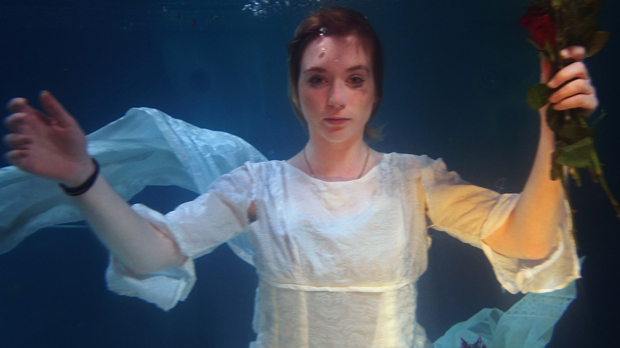Was Shakespeare heroine based on Bard’s cousin?
A “tantalising” family link to Shakespeare’s tragic character Ophelia has been revealed by an academic study of accidental deaths in Tudor England.

A coroner’s report shows Jane Shaxspere drowned aged two-and-a-half while picking corn marigolds 20 miles from Stratford-upon-Avon in 1569, when Shakespeare would have been aged about five.
The discovery led to speculation that Jane could have been his younger cousin, and that her story inspired the death of the flower-loving Ophelia character in Hamlet, who drowned after falling into a brook.
Link to Ophelia “tantalising”
The inquest jury recorded a “misfortune” verdict on Jane’s death, which happened at the mill pond at Upton Warren, Worcestershire.
At present the link is just theoretical but project leader Steven Gunn, of Oxford University‘s Faculty of History, said: “It was quite a surprise to find Jane Shaxspere’s entry in the coroners’ reports – it might just be a coincidence, but the links to Ophelia are certainly tantalising.”
Emma Smith, of Oxford’s Faculty of English Language and Literature, said: “Even if Jane Shaxspere were not related to the playwright, the echo of their names might well have meant that this story stuck in his mind.
“It’s a good reminder that, while Shakespeare’s plays draw on well-attested literary sources, they also often have their roots in gossip, the mundane, and the domestic detail of everyday life, we know this about King Lear, for example.”
Our Culture Editor Matthew Cain's lets rip with his opinions on the latest releases across the arts. Read his latest blog.
Lethal performing bears
Dr Gunn has also discovered more slapstick causes of death which he felt could have provided “material for Laurel and Hardy or Monty Python’s upper-class twit of the year”.
He said: “One man shot himself in the head while trying to get out the arrow stuck in his longbow and another fell into a cesspit while relieving himself.
It also appears a famous Shakespearean stage direction “exit pursued by a bear” may have been prompted by contemporary culture.
Dr Gunn revealed: “At least three people were killed by performing bears. One bear’s value is listed as a princely 26 shillings and four pence.”
And it seems enjoying yourself (in some curious ways) in Tudor times was a hazardous pursuit: “One unlucky man was standing in a garden on the edge of Coventry when a maypole fell over. It missed him and hit the city wall – but his narrow escape turned to disaster when a stone fell off the city wall, hit him on the head and killed him.”
“One man crushed his testicles while playing a ‘Christmas game’ and a Scottish man is recorded as dying after offering to demonstrate a pastime popular in his country which seems to have involved lying down and being tied up.”
Children’s deaths
The level of detail in coroners’ reports has revealed insights into Tudor life. Dr Gunn said: “Coroners’ reports of fatal accidents are a useful and hitherto under-studied way of exploring everyday life in Tudor England. Some medieval historians have used them, but the Tudor records are much fuller.
“The inquiries into deaths were extensive and solemnly undertaken; the detail in which Jane Shaxspere’s death was reported suggests that children’s deaths merited careful consideration, and other young girls are similarly reported as drowning when picking flowers.”
She said the project has already made some interesting discoveries including the finding that modes of death in Tudor times were strikingly different those in the 21st century: “Workmen often drowned when they stripped off to bathe in rivers and ponds after work, so maybe 16th century people had more sense of hygiene than we think.
“Deaths from house fires were much more rare, because houses tended to be only one storey high so were easier to escape from, and considerably fewer people died from falling over in Tudor England, perhaps because the population was a younger one and because there were fewer stairs to fall down.
The project, which is funded by the Economic and Social Research Council, will last for four years.
-
Latest news
-
Windrush scandal: returning to the UK after a forty year wait6m

-
Netanyahu ‘survival’ depends on ‘expanding war’ says head of Palestinian National Initiative5m

-
Proposed law change could strip parental rights from paedophiles5m

-
Hugh Grant settles privacy lawsuit against The Sun newspaper publisher2m

-
Post Office Scandal: what did top executive know?6m

-




